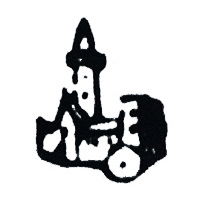VILSEGG CASTLE – ST. ANNA – HISTORIC FORGE
Here to the north of the city of Vils are the ruins of Vilsegg Castle rise from a rocky outcrop.
St. Anna church, the historic hammer mill and farm buildings are located at the foot of the castle. This ensemble is called “St. Anna” by the locals.
Vilsegg Castle
Vilsegg Castle was built in 1220 and is considered to be the oldest castle in the Ausserfern district.
Its builders were the Lords of Hohenegg - an important noble family from the western part of the Allgaeu, now Germany. At the instigation of Peter von Hohenegg, King Ludwig der Bayer elevated Vils to the status of “city” in 1327.
Through the toll trade along the “Salt Road”, the Hoheneggers were able to secure and expand their influence and power for four centuries.
The castle was inhabited for centuries before the aristocrats moved into the city's administrative building, the so-called “Schlössle”, for practical reasons. The castle fell into disrepair. As a result of a nearby earthquake in 1930, the eastern side of the 5-storey keep collapsed in 1939.
Today the ruins are preserved in their current condition.
St. Anna Church
At the foot of the castle hill is St. Anna Church, which was probably originally founded at the same time as Vilsegg Castle.
It served as the castle church. The church is of Romanesque origin (13th century), has been expanded and redesigned over the centuries according to the times. The altarpiece shows the holy Mother Anna, with Joachim and their daughter Mary reading, and was created by Balthasar Riepp (1703-1764), the Gothic figure of Anna Selbdritt (Madonna and child with St. Anne) at the top, also refers to the patron saint of the church.
Today the church is used for services, baptisms, weddings and concerts.
Historic Forge
The smithy or hammer mill was most likely built around the same time as the castle.
The three water-wheels could drive three large hammers, two bellows, a whetstone, and later also a number of other machines. The iron was mined in the surrounding mountains, and was processed in the workshop, originally thought to have been an armory.
The hammer mill was operated commercially until 1960.
As a handicraft business that has been preserved over time, the St. Anna hammer mill is a historical rarity. On the upper floor of the smithy, there is a small museum with interesting references to the history of Vils and the Bavarian royal family with Queen Marie and Ludwig II.
The Vils Cultural Association VilsArt strives to preserve the smithy (privately owned by the heirs of the last smith. The association and its volunteers assure the hammer mill remains open to the public.
